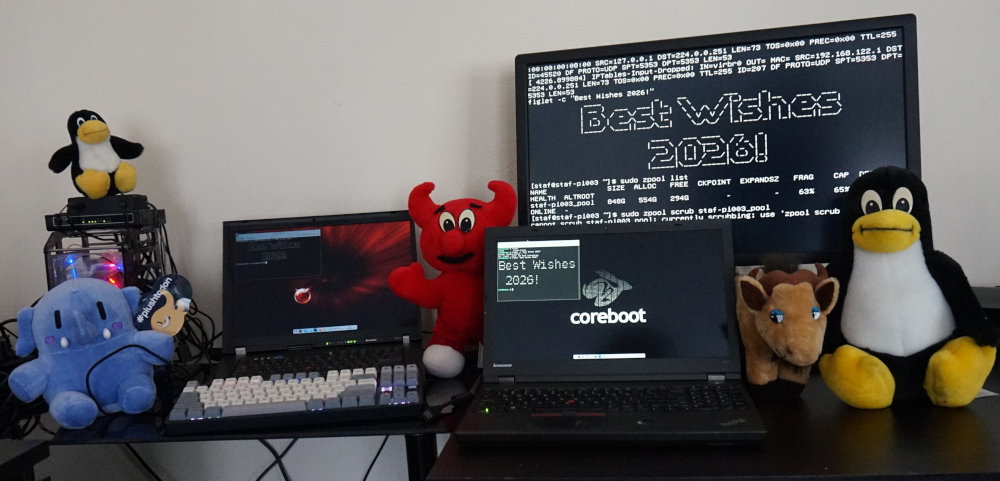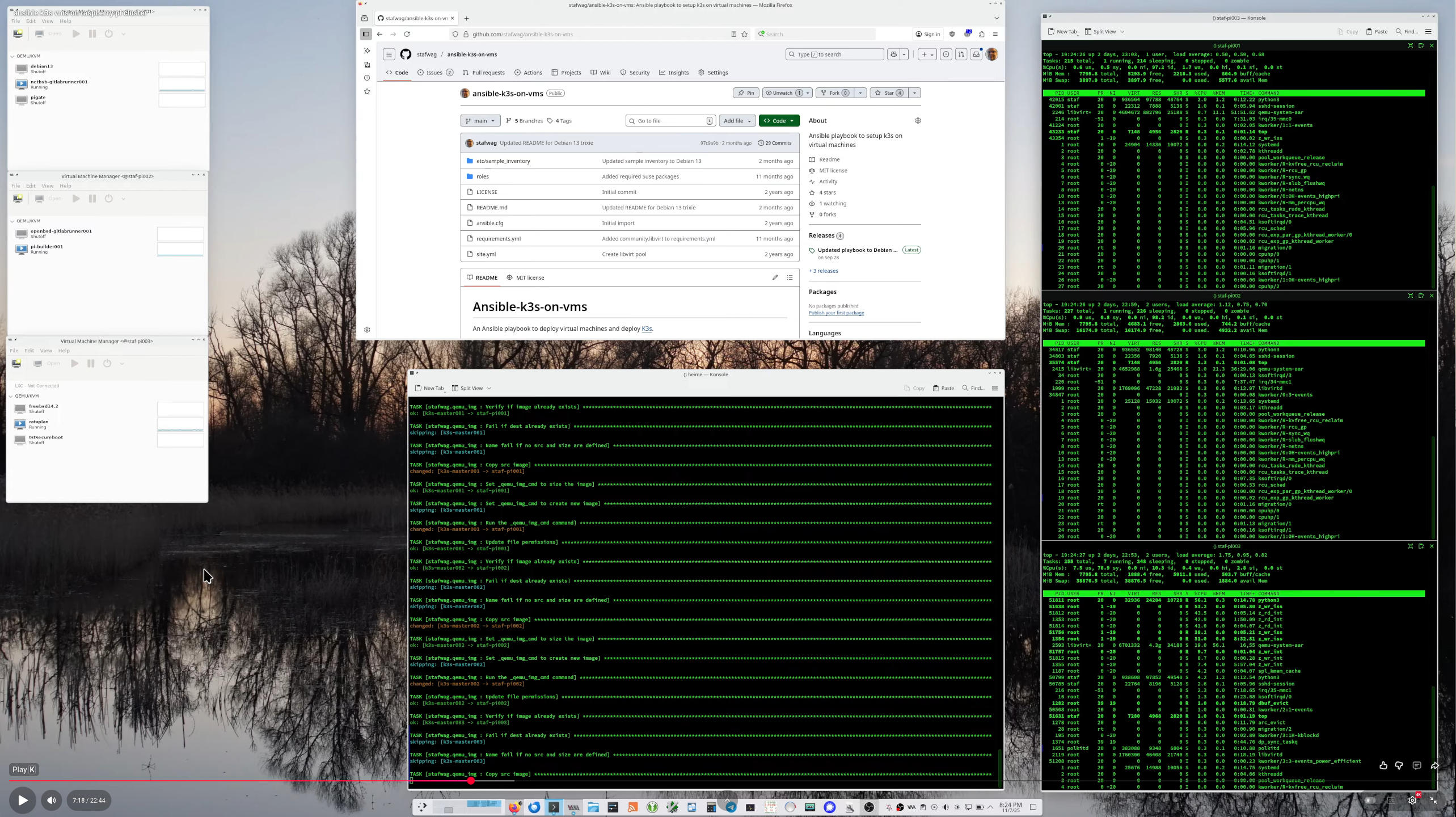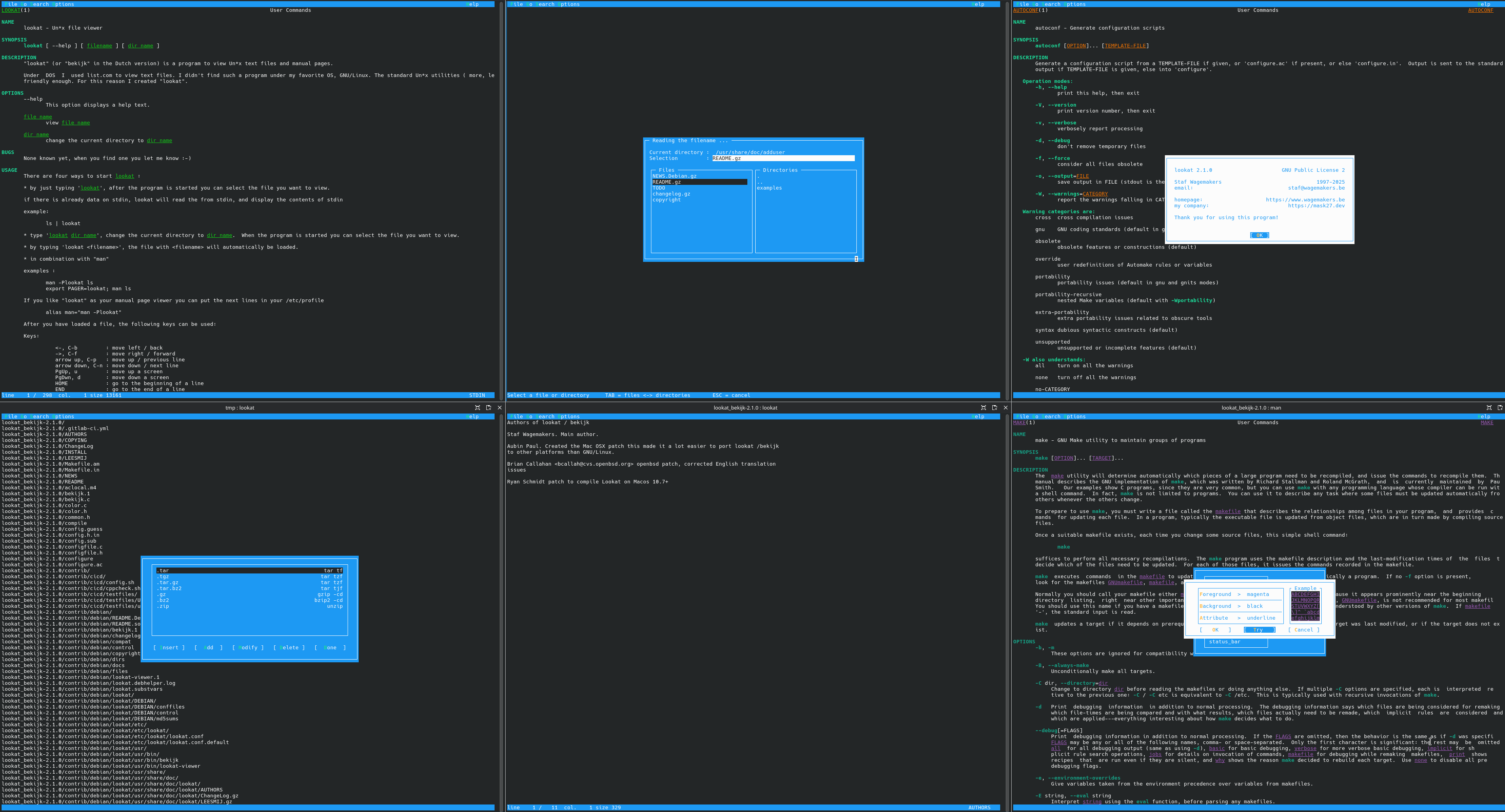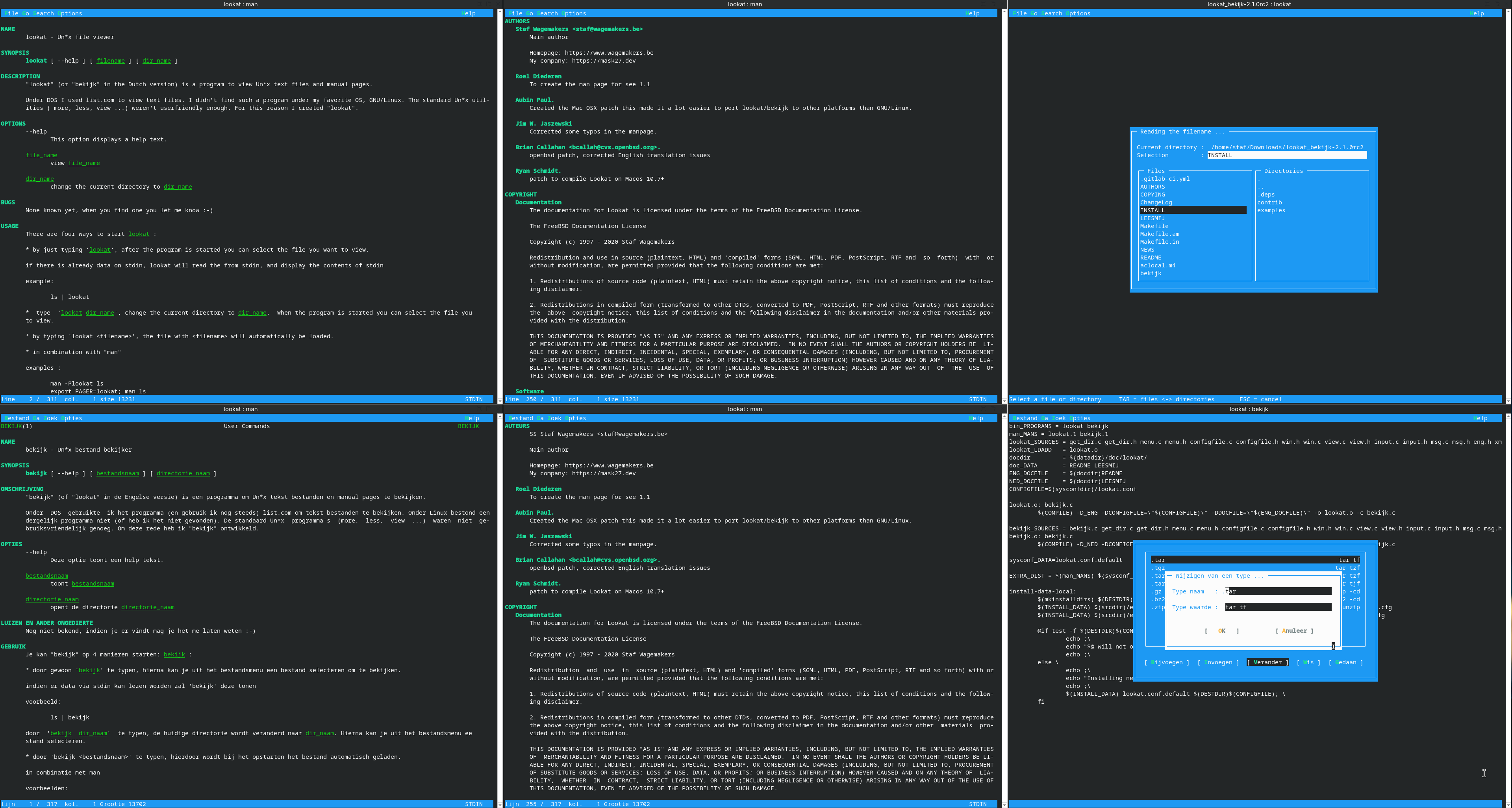Recent posts
ansible-k3s-on-vms updated to Debian 13 (Trixie)
I use the lightweight Kubernetes K3s on a 3-node Raspberry Pi 4 cluster.
And created a few ansible roles to provision the virtual machines with cloud image with cloud-init and deploy k3s on it.
I updated the roles below to be compatible with the latest Debian release: Debian 13 Trixie.
With this release comes a new movie ;-)
Read more...Lookat 2.1.0 released
Lookat 2.1.0 is the latest stable release of Lookat/Bekijk, a user-friendly Unix file browser/viewer that supports colored man pages.
The focus of the 2.1.0 release is to add ANSI Color support.
News
14 Sep 2025 Lookat 2.1.0 Released
Lookat / Bekijk 2.1.0rc2 has been released as Lookat / Bekijk 2.1.0
3 Aug 2025 Lookat 2.1.0rc2 Released
Lookat 2.1.0rc2 is the second release candicate of Lookat 2.1.0
ChangeLog
Lookat / Bekijk 2.1.0rc2
- Corrected italic color
- Don’t reset the search offset when cursor mode is enabled
- Renamed strsize to charsize ( ansi_strsize -> ansi_charsize, utf8_strsize -> utf8_charsize) to be less confusing
- Support for multiple ansi streams in ansi_utf8_strlen()
- Update default color theme to green for this release
- Update manpages & documentation
- Reorganized contrib directory
- Moved ci/cd related file from contrib/* to contrib/cicd
- Moved debian dir to contrib/dist
- Moved support script to contrib/scripts
Lookat 2.1.0rc2 released
Lookat 2.1.0rc2 is the second release candicate of release of Lookat/Bekijk 2.1.0, a user-friendly Unix file browser/viewer that supports colored man pages.
The focus of the 2.1.0 release is to add ANSI Color support.
News
3 Aug 2025 Lookat 2.1.0rc2 Released
Lookat 2.1.0rc2 is the second release candicate of Lookat 2.1.0
ChangeLog
Lookat / Bekijk 2.1.0rc2
- Corrected italic color
- Don’t reset the search offset when cursor mode is enabled
- Renamed strsize to charsize ( ansi_strsize -> ansi_charsize, utf8_strsize -> utf8_charsize) to be less confusing
- Support for multiple ansi streams in ansi_utf8_strlen()
- Update default color theme to green for this release
- Update manpages & documentation
- Reorganized contrib directory
- Moved ci/cd related file from contrib/* to contrib/cicd
- Moved debian dir to contrib/dist
- Moved support script to contrib/scripts
Using OpenTofu/Terraform to create a disposable Tails virtual machine
OpenTofu
Terraform or OpenTofu (the open-source fork supported by the Linux Foundation) is a nice tool to setup the infrastructure on different cloud environments. There is also a provider that supports libvirt.
If you want to get started with OpenTofu there is a free training available from the Linux foundation:
I also joined the talk about OpenTofu and Infrastructure As Code, in general, this year in the Virtualization and Cloud Infrastructure DEV Room at FOSDEM this year:
Read more...






